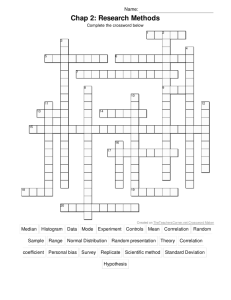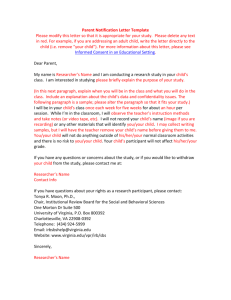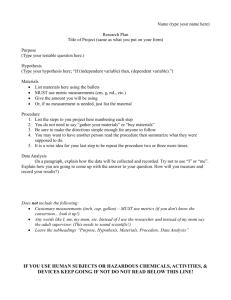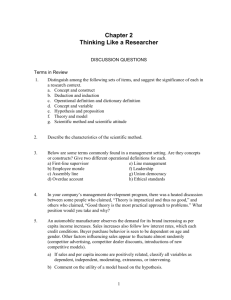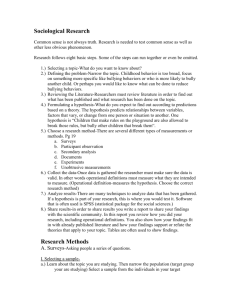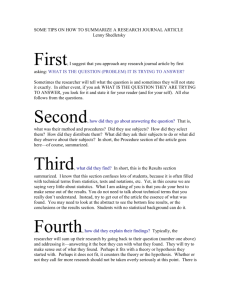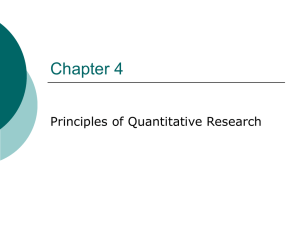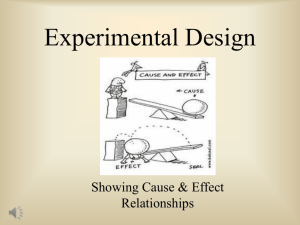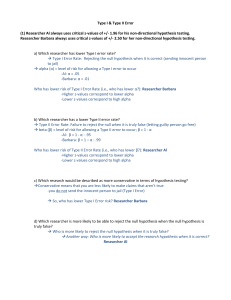How to Analyze a Research Study
advertisement
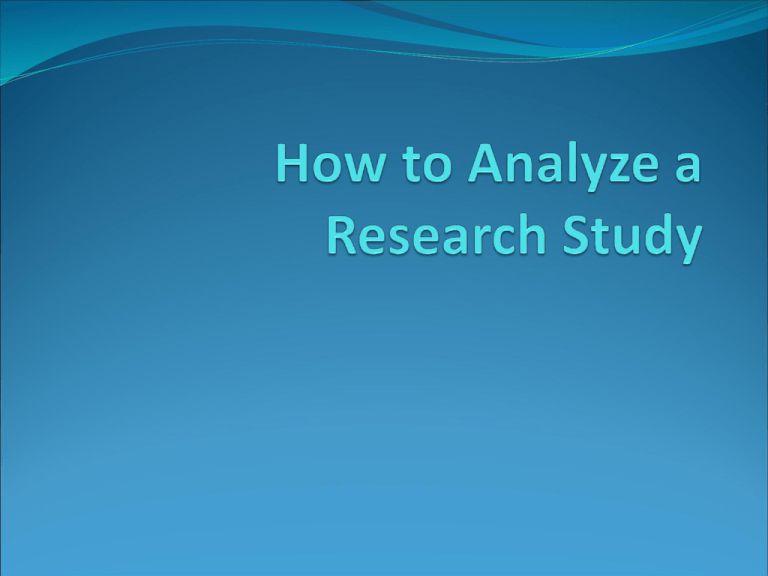
Identify and List… Theory behind the study Aim of study Identify and List… Identify the Independent and Dependent Variables Independent Variable – something that is changed by the scientist What is tested What is manipulated Dependent Variable – something that might be affected by the change in the independent variable What is observed What is measured The data collected during the investigation Identify and List… Confounding variables – undesirable variables that influence the relationship between the independent and dependent variables. Demand characteristics – people act differently because they are in an experiment. Researcher bias – observer bias, the experimenter sees what he or she is looking for. Participant variability – Characteristics of the sample affect the dependent variable. Identify and List… Operational definition of variables An operational definition describes exactly what the variables are and how they are measured within the context of your study. For example, if you were doing a study on the impact of sleep deprivation on driving performance, you would need to operationally define what you mean by sleep deprivation and driving performance. Identify and List… Every study has two hypotheses; one stated as a difference between groups and one stated as no difference between groups. Research hypothesis The hypothesis is directly related to a theory but contains operationally defined variables and is in testable form. Hypotheses allow us to determine, through research, if our theory is correct. Null hypothesis The null hypothesis is a competing hypothesis. It’s basically the opposite of the research hypothesis. Identify and List… Selection of sample population – how and why they used the participants. Effects of participant and researcher expectations Researcher Unintentionally gives information about experiment that could change the way participant acts. Face expressions of researcher can change response of participant Researcher voices cues that give person confidence, so they may do better on the test. - Participant Expectation of how they should behave Placebo effect Identify and List… Findings – explain the results and what the researcher found Use of statistics – explain how the researcher used the statistics in the study, in results or part of experiment. Strengths and limitations of experiment – The strength of an experiment is its capacity to demonstrate cause-and-effect relationships. In order to confirm cause-and-effect, the researcher must construct a situation where all other possible causes are eliminated. The result may be an artificial situation that is removed from the real world. Identify and List… Validity Ecological - For a research study to possess ecological validity, the methods, materials and setting of the study must approximate the real-life situation that is under investigation Cross-Cultural – research study applies to multiple cultures, not just one. Identify and List… Reliability Reliability is the consistency of the study’s measurement, or the degree to which an instrument measures the same way each time it is used under the same condition with the same subjects. In short, it is the repeatability of the measurement. Ethical Issues For Participants - Safety, privacy, informed consent, how adverse events handled. Identify and List… Application to real life How this study could be used in real life, what impact could it have Write a Conclusion – summary of the important aspects of the study.
